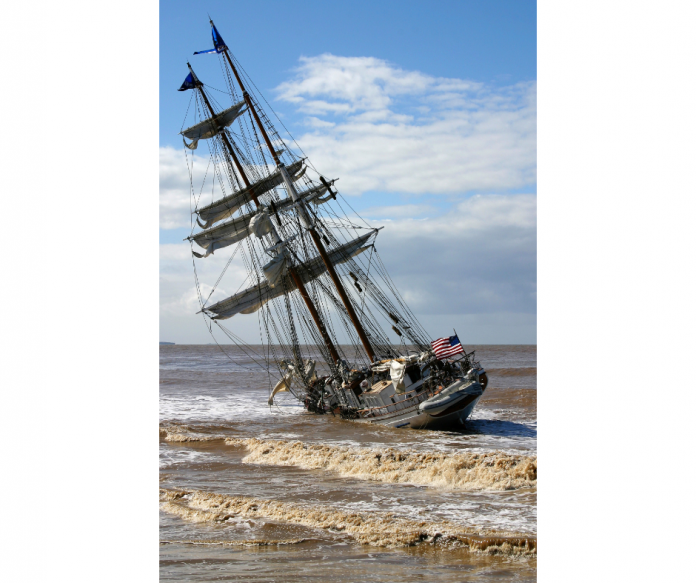The number of tactical mistakes to avoid in our sport is massive, so to help, I have outlined below a couple that we have all made, and some ways to remedy them.
BOAT END START
There are many ways to get into trouble during a start sequence, and I will outline two of the main ones below.
The first is to be early with no place to go. You can’t bear off because there are boats below, and you can’t sail high and slow enough to kill the necessary time.
This is a miscalculation of speed, time, and distance. The way to overcome this is to practice multiple starts before the real thing. This will give you a sense of timing and the position of the line.
If early, accelerate, tack around the committee boat or gybe behind the boats who have had better judgment. In either case, you will end up late at the boat and in the second or third row.
However, you will not have fouled or been over early. The good news is that you will be able to tack immediately for clear air.
FREE PDF BOOK – 49 TIPS
PIN END START
Starting at either end of the line raises the risk factor.
You can be early and run out of room to kill speed before you reach the line, with no options due to the boats around you or the proximity of the pin.
The secret is to realise that you are in trouble early and commit to going around the pin and gybing back to start correctly. Alternatively, if you are not too close to the pin, bear off below the pin, gybe, and start on port.
Both of these are quick moves that will lose the least amount of time.
PORT AND STARBOARD
It is about anticipation and understanding your options so that you do not get caught having to do crash manoeuvres.
These are – attempting a marginal cross, the last-second duck, or desperate tack and involve a high likelihood of a foul and possible visit to the room.
The first option is to tack. You can “Lee Bow”, but you should only execute this if you can comfortably cross. If it is close, you have to tack early, well to leeward.
Option two is to duck. Start early with a smooth bear away and come up as you cross the port tacker’s transom.. The next time you come together, you will be on starboard.
If you are looking to continue to the right side of the course or are enjoying a big lift on port, ducking is the best option. If it is getting time to be leading back to the middle of the course, tacking is the way to go.
WEATHER MARK PORT TACK APPROACH
There are many times when you have been forced to the left, or you were chasing pressure and held on a little too long, and you end up with a port tack approach.
Chances are that you will meet a wall of starboard tackers, and hope you can find a gap or pull off a magic lee bow. Remember that if a starboard tacker has entered the 3 boat length circle on starboard and you cause them to alter course, you are in the wrong and can be protested.
Another scenario is you find you are not quite making the mark. Choices? Hit the weather mark or bear off, gybe around and face the same scenario again. If it is close at the weather mark, you have to duck.
You would have been better off anticipating and tacking earlier to avoid having to duck too many starboard tackers.
FREE CHAMPIONSHIP SAILING GLOVES
LEEWARD MARK
The mistake most sailors make is to wait until the last possible moment in the hope of establishing an inside overlap.
Not only is the burden on you to prove that you got there prior to the three-boat-length circle, but it will also put huge pressure on your team’s mechanics to pull it off.
There is not enough to gain. Take down early for a clean rounding. Come in wide and out tight so you have clear air and good acceleration.
If the boat ahead has had a proper rounding and is affecting your air, you have the option of tacking away.
NOTES
- In each of these scenarios, the principle is anticipation and recognising that things are not going to plan.
- Act sooner rather than later.
- Know what your bailout options are and go straight to them.
|

